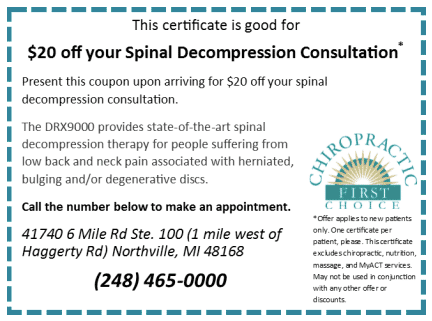Massage therapy offers a natural, non-invasive solution for alleviating pain, muscle tension, and limited range of motion. This article explores effective massage techniques for pain relief, including deep tissue massage, trigger point therapy, myofascial release, Swedish massage, and sports massage. It also explains how to select a qualified massage therapist, determine session frequency, and adopt a holistic pain management strategy. With local experts from Get Well Chiropractic of Northville leading the way, patients gain trusted, evidence-based information to improve their quality of life.
What Are the Most Effective Massage Therapy Techniques for Pain Relief?
Massage therapy targets pain and dysfunction through various techniques. Here, we detail deep tissue massage, trigger point therapy, myofascial release, Swedish massage, and sports massage. These methods improve blood circulation, promote muscle relaxation, and speed up recovery, which is vital for patients dealing with chronic pain and limited mobility.
How Does Deep Tissue Massage Relieve Chronic Pain?
Deep tissue massage targets the deeper layers of muscle and connective tissue using slow strokes and concentrated pressure. This technique releases chronic muscle tension, breaks down scar tissue, and reduces inflammation. It increases local circulation to deliver oxygen and nutrients to affected areas, thereby aiding healing. Research shows significant reductions in chronic pain for patients receiving deep tissue massage, making it effective for conditions like chronic back pain, fibromyalgia, and arthritis. Therapists adjust pressure based on individual pain thresholds to ensure safe and effective treatment.
What Is Trigger Point Therapy and How Does It Target Pain?
Trigger point therapy focuses on small, sensitive knots within muscle fibers that refer pain to other areas. By applying direct pressure and holding fixed strokes, therapists deactivate these knots and restore normal muscle function. Patients often report immediate relief from both localized and referred pain. This therapy benefits conditions such as tension headaches, neck pain, and shoulder pain, and regular sessions can significantly reduce the intensity and frequency of pain.
How Does Myofascial Release Help Reduce Muscle Pain?
Myofascial release uses gentle, sustained pressure to stretch and release restrictions in the fascial tissues surrounding muscles. This technique improves circulation and restores normal tissue function, reducing chronic pain and increasing mobility. It is particularly effective for back pain, plantar fasciitis, and repetitive strain injuries. Consistent myofascial release can enhance range of motion and decrease pain levels by reducing adhesions and promoting tissue elasticity.
What Role Does Swedish Massage Play in Pain and Stress Relief?
Swedish massage is characterized by long, flowing strokes and circular movements. It helps alleviate physical pain and stress by stimulating the circulatory system and releasing endorphins—the body’s natural pain relievers. Lowering cortisol levels during a Swedish massage also aids relaxation, making it beneficial for conditions like neck and shoulder tension, back pain, and migraines. Patients often experience improved sleep and overall well-being after regular sessions.
How Can Sports Massage Aid in Pain Recovery and Prevention?
Tailored for athletes and active individuals, sports massage combines various techniques, including deep tissue and myofascial release, to prevent injuries and facilitate recovery. It enhances muscle flexibility, reduces soreness, and removes lactic acid buildup following intense physical activity. Sports massage is especially useful for addressing hamstring strains, calf pain, and muscle spasms while improving overall biomechanics and range of motion. Studies have shown improvements in endurance and recovery times, making it an essential tool in injury prevention and performance enhancement.
Which Pain Conditions Can Massage Therapy Effectively Treat?
Massage therapy effectively treats multiple pain conditions through its diverse techniques. It alleviates pain, reduces inflammation, and promotes healing, thus enhancing the overall quality of life. This section outlines how massage addresses pain in the back, neck, head, sciatica, and fibromyalgia.
How Does Massage Therapy Alleviate Back Pain?
Back pain is a common complaint treated with techniques like deep tissue massage and myofascial release. These methods relieve muscle spasms, reduce inflammation, and improve circulation to repair damaged tissue. Regular sessions can reduce back pain intensity by up to 40%, lessen dependence on medications, and promote long-term healing through improved posture and muscle balance.
What Massage Techniques Are Best for Neck Pain Relief?
Neck pain, often caused by tension or poor posture, responds well to a combination of Swedish massage and trigger point therapy. These treatments relieve tight muscles, deactivate trigger points, and improve cervical mobility. The result is immediate pain relief and prevention of future episodes by maintaining proper muscle alignment and supporting spinal health.
Can Massage Therapy Help With Headaches and Migraines?
Headaches and migraines, which are frequently linked to stress and muscle tension, can be significantly reduced with massage therapy. Trigger point therapy targets specific muscle knots that may trigger headaches, while Swedish massage helps lower stress hormones and relax the head and neck muscles. Many patients experience shorter and less intense headache episodes as a result.
How Is Sciatica Pain Managed Through Massage?
Sciatica pain, often caused by irritation of the sciatic nerve, is managed effectively with deep tissue massage and myofascial release. By loosening tight muscles around the lower back and buttocks, these techniques relieve nerve pressure and reduce adhesions. Patients typically notice a decrease in radiating pain and improved hip flexibility after multiple sessions, integrating these methods into a broader treatment plan for sciatica.
What Are the Benefits of Massage for Fibromyalgia Pain?
Fibromyalgia, marked by widespread pain and fatigue, benefits from gentle techniques such as Swedish massage and myofascial release. These therapies reduce muscle tension, improve sleep quality, and help regulate the nervous system by lowering stress hormones. Regular sessions contribute to improved mood, decreased pain, and better overall well-being, making massage a vital component of fibromyalgia management.
What Are the Key Benefits of Massage Therapy for Pain Relief?
Massage therapy offers a wide range of benefits beyond immediate pain relief. It helps reduce inflammation, enhance circulation, promote muscle relaxation, and improve range of motion. These effects combine to lessen short-term symptoms and support long-term mobility and quality of life.
How Does Massage Reduce Pain and Inflammation?
By stimulating endorphin release and lowering stress hormones like cortisol, massage therapy naturally reduces pain perception and inflammation. Deep tissue techniques interrupt pain-spasm cycles and improve blood flow, which helps remove metabolic waste such as lactic acid. This biochemical shift results in a noticeable decrease in pain intensity after regular sessions.
In What Ways Does Massage Therapy Improve Circulation?
Techniques like Swedish massage use rhythmic movements to stimulate the cardiovascular system, promoting the flow of oxygenated blood to muscles. Improved circulation also accelerates the removal of inflammatory substances and supports lymphatic drainage, reducing swelling and aiding tissue repair.
How Does Massage Promote Muscle Relaxation and Flexibility?
Massage therapy mechanically stretches tight muscle fibers and breaks down adhesions. Methods such as effleurage and petrissage help relax muscles, reduce spasms, and increase long-term flexibility. This enhanced range of motion supports better biomechanics and lessens the strain on joints, contributing significantly to overall pain relief.
Can Massage Therapy Help Reduce Stress-Related Pain?
By reducing stress levels and balancing the autonomic nervous system, massage therapy lowers cortisol and boosts endorphins. The resulting relaxation not only decreases pain but also improves mood and overall well-being. A regular massage routine can reduce the occurrence of stress-induced headaches and muscle cramps.
How Does Improved Range of Motion Contribute to Pain Relief?
Enhancing range of motion (ROM) is critical for reducing pain. Techniques such as myofascial release and deep tissue massage free up restrictions in muscles and connective tissue, allowing smoother movement. Improved ROM minimizes injury risk and eases daily activities, leading to a higher quality of life.
How Do You Choose a Qualified Massage Therapist for Pain Relief?
Selecting the right massage therapist is crucial for effective pain relief. Key factors include certifications, personalized treatment approaches, and experience with specific pain conditions. A well-informed decision based on testimonials and credentials can greatly influence treatment success.
What Certifications and Specializations Should You Look For?
Look for therapists with valid state certifications (e.g., Licensed Massage Therapist) and specialized training in deep tissue, trigger point, or sports massage. Additional credentials in medical massage and continuous education in pain management indicate a provider’s competence and commitment to high standards.
How Does Personalized Treatment Enhance Pain Management?
A personalized treatment plan, based on a thorough patient assessment, ensures that massage techniques and pressure levels are tailored to individual needs. This customized approach results in more effective pain relief and recovery, fostering trust and comfort between the therapist and patient.
Why Is Experience With Specific Pain Conditions Important?
Therapists experienced with conditions like sciatica, fibromyalgia, and chronic back pain have the expertise to adjust techniques based on patient feedback. Their familiarity with various pain mechanisms leads to safer treatments and more sustainable results. Inquiring about their experience and reviewing case studies can provide additional assurance of competency.
How Can Client Testimonials Help in Choosing a Therapist?
Client testimonials offer insights into a therapist’s effectiveness and professionalism. Positive reviews highlighting improved flexibility, pain relief, and overall satisfaction can serve as strong endorsements. Look for consistent themes that confirm the therapist’s ability to deliver long-term benefits.
What Questions Should You Ask Before Booking a Massage?
Before booking, ask questions such as: “What experience do you have with my specific condition?”, “How will you customize the treatment?”, and “Can you provide references or testimonials?” Clear communication sets expectations and helps ensure that the treatment plan addresses your needs effectively.
How Often Should You Get Massage Therapy for Effective Pain Relief?
The frequency of massage sessions is key to maintaining pain relief. It depends on the severity of the condition, the type of massage used, and the patient’s response. Guidelines and scheduling adjustments can optimize long-term benefits.
What Is the Recommended Frequency for Chronic Pain Conditions?
For conditions like persistent back pain or fibromyalgia, an initial intensive phase of one to two sessions per week for four to six weeks is often recommended. This helps break the pain cycle. Maintenance sessions every two to three weeks can preserve improvements, with studies showing up to a 50% reduction in chronic pain symptoms over time.
How Does Treatment Frequency Vary by Massage Technique?
Different techniques have varying treatment intervals. Deep tissue massage may require longer recovery periods, whereas Swedish massage, designed for relaxation, can be done more frequently. Your therapist will adjust scheduling based on the modality and your specific response.
When Should You Expect to Feel Pain Relief After Massage?
Many patients experience immediate relief during and after a session, especially with relaxation techniques like Swedish massage. For chronic conditions, significant improvements typically occur after multiple sessions, usually within two to four weeks of regular treatment.
How Can You Maintain Pain Relief Between Sessions?
To sustain pain relief between sessions, adopt complementary strategies such as gentle stretching, heat therapy, and daily light exercise. Following your therapist’s home-care recommendations, including proper hydration and specific stretches, helps reinforce the benefits of each session.
What Is the Holistic Approach to Pain Relief Using Massage Therapy?
A holistic approach considers the physical, emotional, nutritional, and lifestyle factors affecting pain. By combining massage therapy with stretching, heat application, and lifestyle adjustments, patients can achieve more lasting and comprehensive relief.
How Does Combining Massage With Stretching Enhance Pain Relief?
When massage is paired with regular stretching, the gains in flexibility are maintained and improved. This combination prevents the reformation of muscle adhesions and reduces stiffness, resulting in a smoother recovery process.
What Role Does Heat Therapy Play Alongside Massage?
Heat therapy, whether applied before or after a massage, relaxes muscles, boosts blood flow, and reduces spasms. Together, they enhance each other’s effects, leading to faster and more effective pain relief and improved mobility.
How Can Lifestyle Changes Support Massage Therapy Outcomes?
Incorporating regular physical activity, a balanced anti-inflammatory diet, proper hydration, and stress management techniques can extend the benefits of massage therapy. Simple practices like mindfulness or short daily walks can further reduce pain and support overall well-being.
Why Is a Personalized Pain Relief Plan Important?
A personalized plan that considers your medical history, lifestyle, and pain patterns is essential for long-term success. Tailored strategies integrating massage, stretching, heat, and lifestyle modifications ensure all aspects of pain are addressed, leading to more predictable and sustainable outcomes.
What Are Common Questions About Massage Therapy for Pain Relief?
This section addresses frequently asked questions about massage therapy, including potential risks, session duration, and insurance coverage, to help you understand what to expect.
What Are the Risks and Contraindications of Massage Therapy?
Massage therapy is generally safe when performed by a qualified therapist, but it may not be suitable for individuals with deep vein thrombosis, severe osteoporosis, or certain skin infections. Pregnant women and those with recent fractures should consult a physician. Minor side effects like soreness or bruising can occur but typically resolve quickly.
Can Massage Therapy Replace Medication for Pain?
While massage therapy can reduce reliance on pain medications, it is usually used as a complementary treatment. Many patients find improved pain control and quality of life when massage is integrated into their overall treatment plan. Always consult with your healthcare provider to develop a balanced approach.
How Long Does a Typical Pain Relief Massage Session Last?
A standard pain relief massage session typically lasts 60 to 90 minutes. This allows ample time for an assessment, targeted treatment, and a cooling-down period, ensuring deep tissue work is effective while the patient remains relaxed.
Is Massage Therapy Covered by Insurance for Pain Management?
Many insurance providers recognize massage therapy for pain management—especially when prescribed by a physician. However, coverage varies, so it’s important to confirm benefits with your insurance company or healthcare provider.
How Do You Prepare for Your First Pain Relief Massage?
For your first session, dress in comfortable clothing and arrive well-hydrated. Inform your therapist about any pre-existing conditions or injuries, and discuss your treatment goals during a brief consultation. Avoid heavy meals before the session and plan for some post-treatment relaxation.
Table: Comparison of Massage Techniques and Their Pain Relief Benefits
Before diving into the FAQs, the table below summarizes key attributes of various massage techniques for pain relief, highlighting their main functions and benefits.
This table provides a quick reference to the unique contributions of each technique in reducing pain and improving functional mobility.
List: Key Considerations When Choosing a Qualified Massage Therapist
The following tips can help you select a massage therapist who will provide effective pain relief:
- Certifications and Licenses – Ensuring professional validity through recognized credentials.
Verify that the therapist has valid state certifications and specialized training in pain management techniques. - Personalized Treatment – Tailored sessions directed by a thorough patient assessment.
A customized treatment plan based on your unique needs can lead to better outcomes. - Experience With Specific Pain Conditions – Proven track record with chronic and complex pain.
Choose a therapist with experience in treating conditions similar to yours. - Client Testimonials – Insights from previous patients regarding treatment effectiveness.
Positive reviews and recommendations can provide confidence in a therapist’s skills. - Open Communication – Willingness to discuss and adjust techniques based on patient feedback.
Clear, open dialogue is essential for optimizing treatment and ensuring comfort.
Adhering to these considerations helps ensure you receive the best care for effective pain management.
Frequently Asked Questions
Q: How soon can I expect to see results from massage therapy for pain relief?
A: Many patients notice immediate improvements in pain intensity and muscle relaxation after one session, though chronic conditions may require several weeks of regular treatment for lasting benefits.
Q: Are there any side effects associated with massage therapy?
A: Side effects are generally minor—temporary soreness, slight bruising, or fatigue may occur but usually subside within a day. Communicating with your therapist can help manage any discomfort.
Q: Can massage therapy be combined with other treatments for pain relief?
A: Yes, it is often used alongside physical therapy, stretching, heat therapy, and medication to provide comprehensive pain management and promote long-term healing.
Q: How does massage therapy improve overall flexibility and range of motion?
A: By reducing muscle tension and breaking down adhesions, massage therapy enhances blood flow and tissue repair, resulting in improved flexibility and reduced stiffness.
Q: What should I do if I experience increased pain after a massage session?
A: Inform your therapist immediately; increased pain may signal that the pressure was too intense or that adjustments to the treatment plan are needed. These symptoms are typically temporary.
Massage therapy provides a comprehensive, natural approach to managing pain. It addresses a range of conditions through targeted techniques like deep tissue massage, trigger point therapy, and Swedish massage. By combining massage with lifestyle changes and complementary treatments, patients can achieve lasting relief and improved quality of life. Embracing a personalized, holistic pain management plan is essential for sustainable improvements and overall well-being.




